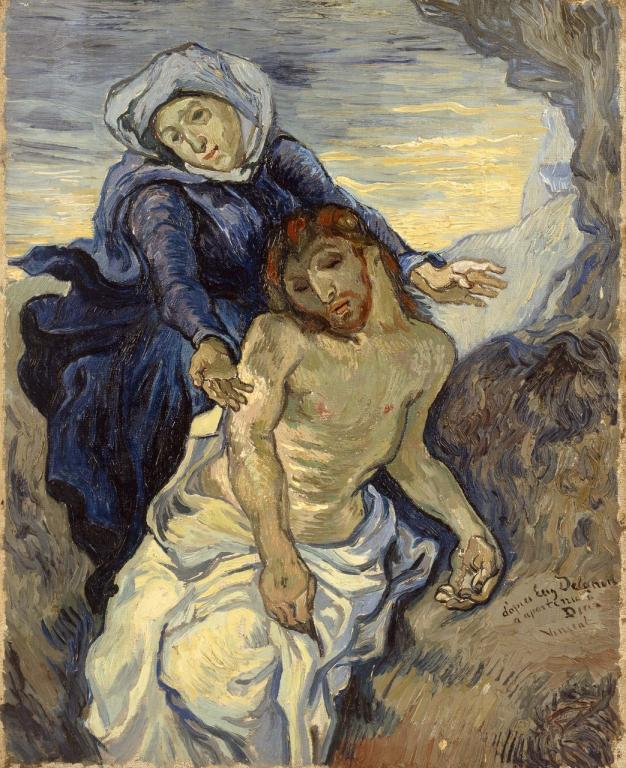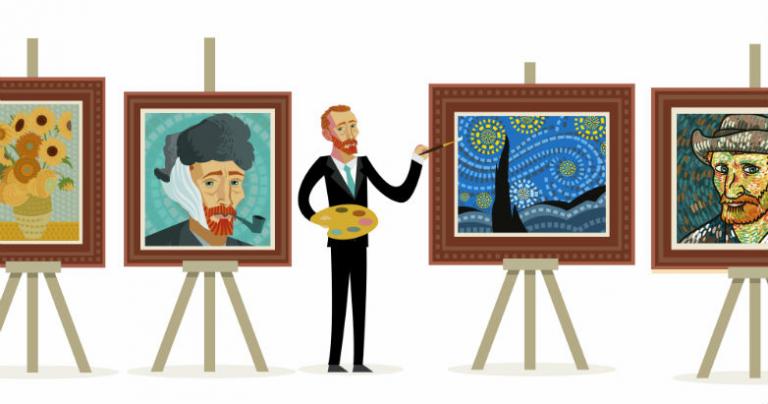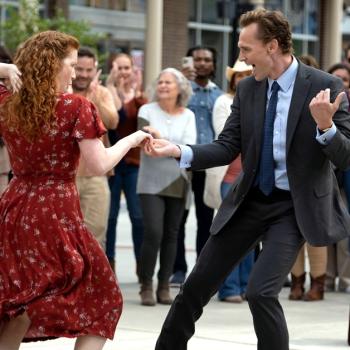The idea of artists grappling with existential despair is a common one, but are creative people doomed to suffer from mood disorders? And, is having these problems a boon to creativity?
The answer appears to be, “not exactly” and “no.”
From the well-researched and ultimately tragic mental-health issues of painter Vincent Van Gogh to the many addiction deaths and suicides among artists in our own time, it’s not outrageous to suggest that creativity and various kinds of mental problems, including depression, are inextricably linked.
A 2017 piece in the Research Digest of the British Psychological Society — quoting a review in Perspectives on Psychological Science, by Christa Taylor of the State University of New York at Albany — suggests that while many artists do indeed suffer mood disorders, just having depression, anxiety, etc., does not necessarily make one more creative.
Some excerpts:
Taylor first looked at whether creative people are more likely to have a mood disorder compared to non-creative controls. She looked at data from from ten studies involving fine arts students, creative writers, and eminent figures from creative fields, and found that yes, there was a clear relationship between being creative and having a diagnosis of a mood disorder, such as depression (overall the association had a moderate-to-large effect size). This finding held across different ways of measuring creativity, such as musical performance or tests of divergent thinking (finding new ideas or solutions). Creativity was most commonly associated with bipolar disorder (a condition marked by periods of low and high mood). It was not associated with all mood disorders – for instance, dysthymic disorder (mood depression that is longer-lasting but milder in nature than clinical depression) was no more common among creative people than controls.
To address a slightly different question – compared to healthy controls, are people with a clinical diagnosis of mood disorder more creative? – Taylor used a second meta-analysis combining 13 studies, including a set of mega-studies involving millions of people. The answer was a quavering no, not really. Overall, differences in creativity between people with mood disorder and control were statistically non-significant. Taylor only detected any meaningful differences by narrowing the definition of creativity – people with mood disorders scored higher for painting ability, for instance, but not for many other measures, such as on laboratory tests of creativity, for example. Focusing on specific disorders, Taylor found some evidence for superior creativity among those with bipolar disorder and major depression (but still the differences from controls were modest).
The new findings appear contradictory, but to simplify, they suggest that creative people are indeed liable to mood disorder, but overall there is little evidence that a mood disorder makes you more creative.
Leaving aside inherited tendencies to mental-health issues (which can affect anyone, artists or not), why should creatives be more susceptible? Well, the creative life, with its monetary feasts and famines, doesn’t exactly lend itself to financial security. As we all know, a shaky financial situation weighs heavily on almost everyone’s minds.
Also, since the creative process is, in itself, a bit mysterious, that means it’s not always under the artist’s conscious control. You can learn the craft of writing or painting or music, but few, if any, can dip into the wellspring of creativity at will. Living with a lack of control over the source of one’s work, even one’s identity, is not conducive to a tranquil mindset.
The nature of their work and personalities can make artists seem eccentric or oddball, and that can further social isolation from friends or family.
But, the study suggests, just because you’re moody or sad doesn’t necessarily mean that you’re more creative than anybody else.
So, if you are an artist, how to avoid the worst assaults on your mental health? The financials will always be tough, but making sure you have at least one very practical, marketable skill can help fill in the gaps (actor Harrison Ford could always fall back on his carpentry skills before he hit it big in the movies). Reaching out and forming bonds with fellow creatives — or just people who are sympathetic and tolerant to artistic types — can reduce isolation.
Obviously, seeking professional help for depression, bipolar disorder and other mental-health issues is paramount. Modern medicine offers much that wasn’t available to Van Gogh and artists like him. There may be a fear of sacrificing some creativity while on medication and so forth, but set against addiction and suicide, there’s at least a hope of finding a balance.
The study also suggests that we shouldn’t romanticize mood disorders or encourage them as a path to creativity — because they appear to be a by-product of creativity, not its cause.
Obviously, we believe that keeping and maintaining a strong faith, a connection to the Church and the Sacraments, and forming bonds with fellow believers can go a long way to relieving the inherent stresses of the creative life.
Can you be an artist and make a living, keep yourself on an even keel and be relatively happy? It’s a challenge, for sure, but nothing is impossible with God.
While Van Gogh succumbed to his problems, that doesn’t mean the struggle isn’t worth it. As the artist wrote to his brother Theo:
Do you know that it is very, very necessary for honest people to remain in art? Hardly anyone knows that the secret of beautiful work lies to a great extent in truth and sincere sentiment.
Van Gogh was also raised a Christian, and did some beautiful faith-inspired art, like this Pieta (with commentary from the website of the Vatican Museum):

The artist has also been a frequent subject of movies. Here’s a clip from At Eternity’s Gate, a 2018 biopic of Van Gogh, available on Amazon Prime, Google Play, Vudu and YouTube:
Image: Shutterstock
Don’t miss a thing: Subscribe to all that I write at Authory.com/KateOHare.
And, head over to my other home, as Social Media Manager at Family Theater Productions; and check out FTP’s Faith & Family Media Blog, and our YouTube Channel.















